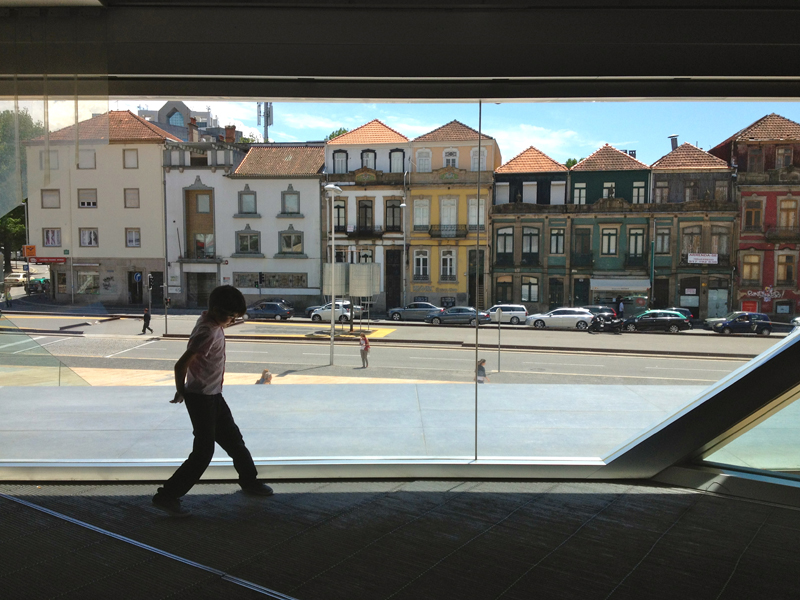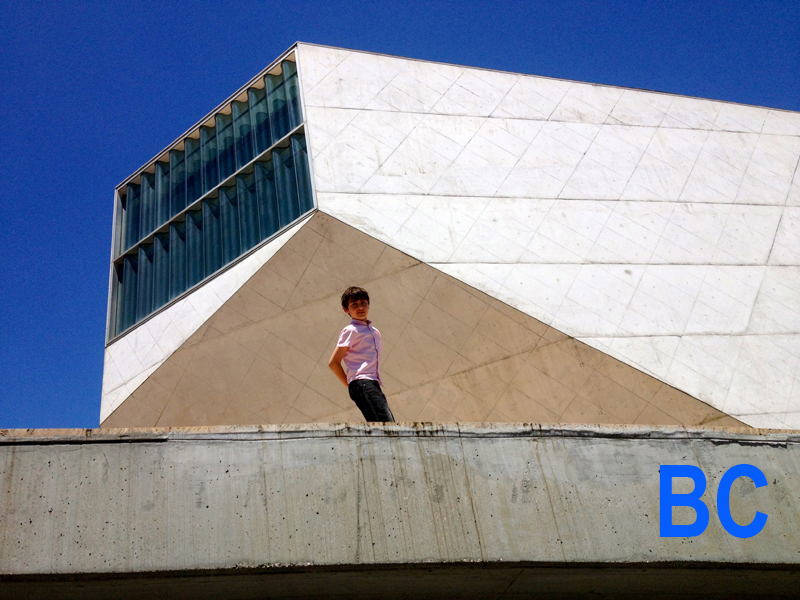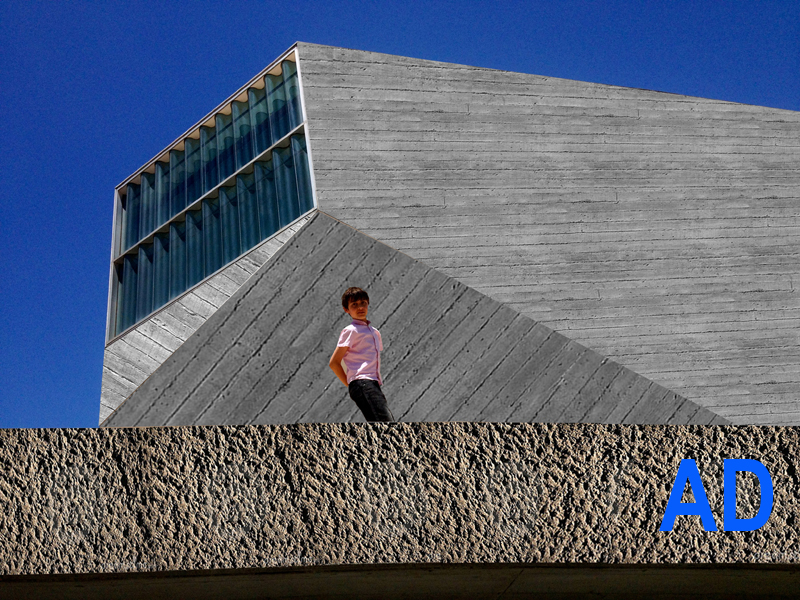000off_Casa da Musique concrète
To celebrate the impending opening of the 3rd edition of the Architecture Triennale of Lisbon, WHAT_architecture was commissioned to review one ‘Portuguese building’. So we chose the happy accident of an office Portu-Polish wedding to ‘revisit’ OMA’s Casa da Música in Porto nearly one decade after its completion. What follows is not the completed review (which is ‘saved’ for the Triennale opening on the 12th September 2013) but merely a question triggered by a first sight: does contemporary architecture have to be shiny and new?
Upon arrival it was evident that the Casa da Música, commissioned as a European Culture Capital project, did not belong to the recent crisp white wall Portuguese modernist tradition of say Siza or Aires Mateus Arquitectos. This was a building evidently so poorly maintained (a PPP failure?) that only the strength of the concept lifted the shock of seeing a dirty ‘new’ building. The dirt seemed to result from the concrete shuttering not being in facial plane and thus accumulating urban soot. Was this the fault of the architect or the contractor? Porto or the EU? Such concerns are irrelevant when the old traditional houses opposite Casa da Música’s front door are also in a state of extreme degradation. A contextual empathy? Heck, Porto is a great city and all great cities have the ‘authenticity of dirt’: Istanbul, Berlin, Brussels, even Hackney. If these cities are grimy why should contemporary architecture be so purile? Dirt adds value (and music recognises this in its genres: rock, grime, dirty house). Yet the historic European city has a patination which appears to be at odds with emerging urban aspirations. The shiny new world cities which frequently top the Economist Intelligence Unit’s list of best city to live in such as Toronto, Sydney, Melbourne, Auckland are all gloss, no grit.
Back in London we wondered what if Rem had decided to use a Brutalist material palette to confront the weathered city? Rough cast concrete as evident in Le Corbusier’s Unite d’Habitation in Nantes (where one can stick their fist in the hole-in-a-wall due to a dry concrete mix) or, next to our Old St office, rough cast like the Barbican. We imagined a Casa da Música brutally remixed by WHAT_architecture where dirt was celebrated not as an aesthetic (Adjaye’s Dirrty House) but as an actuality of urbanism.
SAY WHAT_!?




